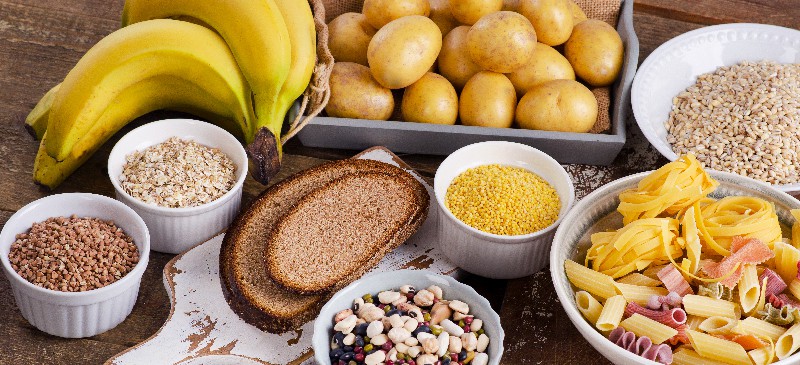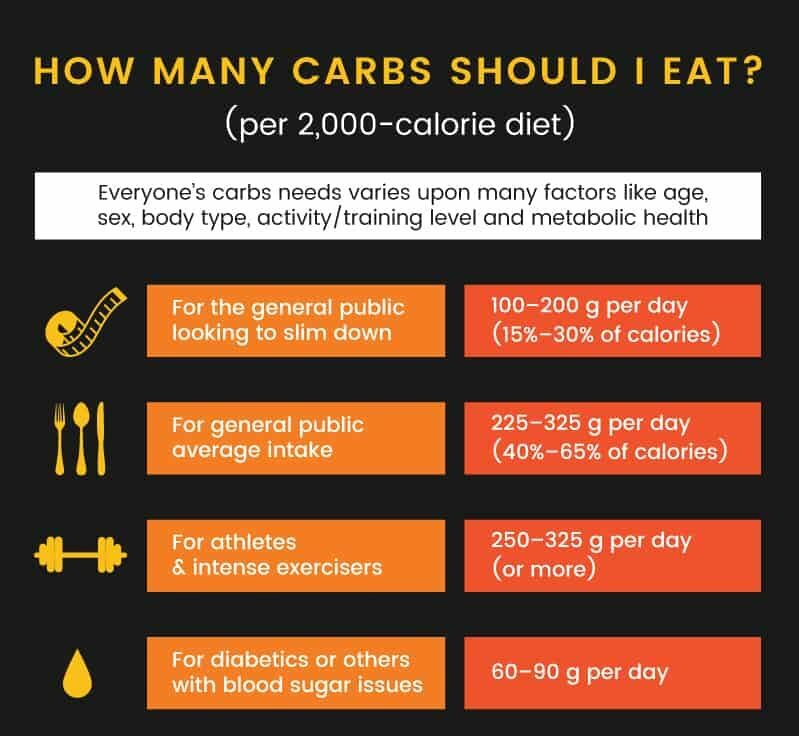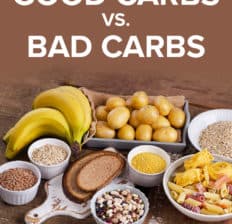This Dr. Axe content is medically reviewed or fact checked to ensure factually accurate information.
With strict editorial sourcing guidelines, we only link to academic research institutions, reputable media sites and, when research is available, medically peer-reviewed studies. Note that the numbers in parentheses (1, 2, etc.) are clickable links to these studies.
The information in our articles is NOT intended to replace a one-on-one relationship with a qualified health care professional and is not intended as medical advice.
This article is based on scientific evidence, written by experts and fact checked by our trained editorial staff. Note that the numbers in parentheses (1, 2, etc.) are clickable links to medically peer-reviewed studies.
Our team includes licensed nutritionists and dietitians, certified health education specialists, as well as certified strength and conditioning specialists, personal trainers and corrective exercise specialists. Our team aims to be not only thorough with its research, but also objective and unbiased.
The information in our articles is NOT intended to replace a one-on-one relationship with a qualified health care professional and is not intended as medical advice.
Good Carbs vs. Bad Carbs: 30 Healthy Carbs You Want to Eat
April 8, 2025

Carbohydrates are seemingly always a hot topic in the nutrition world, particularly when it comes to discerning between good carbs and bad carbs. In one arena, we hear how wonderful carbohydrates are for exercise performance and metabolism, and then the next day we hear about a recent study showcasing the potential damaging blood sugar effects of carbohydrate consumption.
This constant back and forth leaves the general public dazed and confused on whether carbs are good or bad for our health. The truth is, like with most foods, there are good carbs and unhealthy carbs.
How is one to tell the difference? It can be a bit confusing.
With the rise in certain diets, such as the low-carbohydrate diet, no-carb diet or high-fat keto diet, this adds to the bombardment and confusion surrounding carbohydrates. It’s no wonder so many of us aren’t quite sure which direction to go.
Should we avoid carbohydrates or eat them? Should we be counting them?
This article will explore the science of carbohydrates and what they do for the body, as well as dispel some of the common myths surrounding this infamous macronutrient and how to discern good carbs from bad ones.
What are carbohydrates?
What exactly is a carbohydrate? A carbohydrate is a molecule that consists of carbon hydrogen and oxygen atoms and is usually of a hydrogen-oxygen atom ratio of 2:1.
Carbs are one of the three macronutrients, along with protein and fat, that we need in varying amounts to meet and sustain our metabolisms and energy levels. When we consume carbohydrates, our digestive tracts convert them into glucose. This glucose is then burned to produce heat and adenosine triphosphate (ATP).
ATP is a molecule that stores and releases energy as needed by the cells in our bodies.
Carbohydrates comprise three categories:
- Sugars: The first are sugars, which are sweet, small-chain carbohydrates. Some prime examples of sugars are glucose, sucrose, galactose and fructose.
- Long-chain glucose: The second type of carbohydrate is composed of long-chain glucose molecules, which get broken down into glucose in the digestive tract.
- Fiber: The last type of carbohydrate is fiber, which we do not have the capacity to break down. However, our gut bacteria has the capacity to extract some of that fiber as fuel and convert it into short chain fatty acids. High-fiber foods are also great sources of prebiotics, which serve many functions in the body, like providing fuel for our gut bacteria. Research published in Frontiers in Behavioral Neuroscience suggested that dietary prebiotics can improve non-REM and REM sleep after a stressful event, one benefit of good carbs that provide fiber.
How exactly does glucose get converted into energy? Glucose gets converted into energy with or without oxygen.
It gets transformed into energy with oxygen in the cell organelle called mitochondria. The byproduct of this process involves ATP, heat and carbon dioxide.
Our bodies use the glucose as a fuel source for the cells in the body, tissues and organs. Any excess sugar gets stored in the liver and muscle tissues as glycogen, where it can be accessed at a later time.
When the glucose gets transferred into energy without the presence of oxygen, the end result is lactic acid, which causes muscle soreness.
Good carbs vs. bad carbs
How do we tell the difference between good carbs and bad carbs? It’s important that we understand the type of carbs we eat because the type dictates how the carbs respond in the body.
Whole, unprocessed carbs are considered healthy carbs. Some examples include sweet potatoes, bananas, potatoes, brown rice, yucca, legumes and dates.
All these foods have their nutrients intact and have been minimally altered to impact the nutritional value of the food.
Refined carbs are carbohydrates without the fiber content present. They have been altered in such a way that the processing methods strip the food of the many key vitamins, minerals and fatty acids.
Examples of refined carbs include fruit drinks, white flour, white rice, white pasta and pastries. Healthy carbs impact insulin levels in the body much differently than refined, processed carbs do.
A 2013 study published in the American Journal of Epidemiology looked at the effects of refined carbs on coronary heart disease. These researchers found that intake of bad carbs led to an increased risk of cardiovascular disease and obesity.
Processed carbs lead to a constant blood sugar fluctuation throughout the day, thus impacting overall human performance and longevity.
Researchers from the American Heart Association examined the harmful effects of high glycemic index and high glycemic load foods like processed carbs. The intake of bad carbs correlated with impaired glucose intolerance, greater insulin concentrations circulating throughout the bloodstream and an overall increased risk for type 2 diabetes.
Best good carbs
Not all carbohydrates are considered “bad.” Healthy carbohydrates, which contain natural sugars and resistant starch, exhibit vastly different effects on the body than refined carbs do.
Some of the best healthy carbs include:
- Whole grains
- Starchy vegetables
- Starchy beans and legumes
- Fruits
- Dairy
1. Sweet potatoes/purple potatoes
For example, purple sweet potatoes are high in various complex sugar molecules, unrefined starches, vitamins, trace minerals and phytochemicals, like anthocyanins.
A study from Kansas State University examined the effects of purple sweet potato intake on one’s health. Researchers found that purple sweet potatoes contain derivatives from anthocyanins called cyanidin and peonidin.
These specific compounds show vast improvements in slowing cancerous cell growth proliferation and boosting overall metabolic function and cardiovascular health.
Some other highly regarded carbs include bananas, dates and buckwheat. These particular foods are high in carbohydrates and fiber, as well as chock-full of vitamins, trace minerals, antioxidants and essential fatty acids.
2. Buckwheat
Buckwheat contains quite the impressive nutritional profile. For starters, buckwheat ranks medium low on the glycemic index.
The glycemic index pertains to how our blood sugar rises after two hours of food consumption. The higher the number on the glycemic chart, the greater the rise in your blood sugar levels.
Foods that break down more quickly elicit a larger increase in blood glucose levels in the bloodstream than carbs that break down at a slower rate.
Buckwheat is also rich in resistant starch. Resistant starch is a specific type of starch that resists digestion, thus making it fall under the category of fiber.
It passes into the colon, where it is broken down by our gut bacteria. These nourishing bacteria create these short-chain fatty acids, such as butyrate, which boost colon health by providing fuel for the cells lining the colon.
Another well-known compound that buckwheat exhibits is called rutin, which is one of the main antioxidants present in buckwheat. Research published in Food Research International found that rutin displayed protective lipid peroxidation benefits. Lipid peroxidation means the degradation of lipids, or the oxidation of lipids resulting in cellular damage.
3. Dates
Dates are also some of the best good carbs on the planet, especially Medjool dates. They are quite high in glucose, fructose and sucrose and rich in minerals like manganese, potassium, phosphorus, copper, magnesium and selenium.
All of these minerals play a role in many functions in the body, like supporting cardiovascular health, intestinal health and nervous system health.
Dates are rich in amino acids, soluble fiber and insoluble fiber. These proteins and fibers stimulate the digestive tract to influence a healthy and robust microbiome.
A really fascinating study out of the University of Scranton explored the polyphenol content of dates. The researchers found that dates had the highest antioxidant capacity of any dried fruit.
Many researchers suggest that antioxidants play a major role in lowering the mortality rates of cancer and other chronic diseases.
4. Bananas
Bananas are rich in bioactive compounds like phenolics, carotenoids, biogenic amines and phytosterols, which contribute to their antioxidant properties. These compounds help protect the body against oxidative stress and may reduce the risk of chronic degenerative disorders.
They are a source of natural sugars and resistant starch, especially when under-ripe. This starch feeds beneficial gut bacteria and helps regulate blood sugar.
They’re also high in potassium, which supports heart health and muscle function.
5. Potatoes
While often misunderstood, potatoes, especially when cooked and cooled, contain resistant starch, which supports gut health and improves insulin sensitivity. Potatoes are also carbohydrate-rich foods, low in fat and provide essential nutrients.
They are particularly high in vitamin C and serve as a good source of several B vitamins and potassium.
Additionally, the skins offer substantial dietary fiber, contributing to digestive health.
6. Brown rice
Brown rice nutrition contains higher amounts of dietary fiber, moderate protein levels, unsaturated lipids, micronutrients and several bioactive compounds compared to white rice. Its consumption is recommended to achieve nutritional sustainability and may offer various health benefits, such as helping protect against diabetes.
Unlike white rice, brown rice retains its bran and germ, making it higher in fiber and micronutrients, like magnesium and selenium. Its slow-digesting carbs help stabilize blood sugar levels and promote satiety.
7. Yucca
Yucca is a starchy root rich in complex carbs and resistant starch. It’s naturally gluten-free and a source of vitamin C and manganese, supporting immune function and energy metabolism.
Yucca, particularly Yucca schidigera, has been studied for its potent health effects. Research has revealed that yucca supplementation can influence ovarian follicle development and hormone release, suggesting a role in reproductive health.
8. Legumes
Legumes are complex carbs with a low glycemic index, making them great for blood sugar control. They’re also rich in fiber and plant protein, which support heart health and satiety.
Legumes are recognized for their health benefits, including being low-glycemic index foods with potential hypocholesterolemic effects. Despite their advantages, consumption is often low, and efforts are being made to include them more prominently in dietary guidelines.
9. Quinoa
Quinoa is a gluten-free grain that provides an excellent source of protein, amino acids, essential minerals and omega-3 fatty acids. Its nutritional profile makes it a valuable addition to diets, especially for individuals with specific dietary needs.
Quinoa is a pseudo-grain with complete protein (all nine amino acids), high fiber and slow-digesting complex carbs. It has a low glycemic load, helping balance blood sugar and support muscle repair.
10. Oats
Oats are beneficial for human health, promoting immunomodulation and improving gut microbiota. They contain bioactive compounds, such as phenolic acids, tocols, sterols, avenacosides and avenanthramides, contributing to their health-promoting properties.
Oats also are rich in beta-glucan, a type of soluble fiber that reduces LDL cholesterol and stabilizes blood sugar. They provide long-lasting energy and support digestive and heart health.
11. Beets
Beets contain natural nitrates that improve blood flow and athletic performance. Their carb content includes fiber and antioxidants, like betalains, which reduce inflammation and oxidative stress.
Beetroot juice consumption has been associated with improved oxygen delivery to skeletal muscles, enhanced muscle efficiency and increased exercise tolerance and endurance. These effects may positively impact sports performance.
12. Oranges
Orange nutrition provides good carbs primarily as natural sugars and fiber. They’re high in vitamin C, flavonoids and other antioxidants that reduce inflammation and support immune health.
Orange juice has been shown to reduce inflammation in human trials. Its effects on innate and acquired immunity are areas for further exploration, particularly in specific population sub-groups such as older individuals.
13. Blueberries
Blueberries contain anthocyanins that enhance insulin sensitivity and cognitive function. Their carb content comes with a low glycemic impact and potent anti-inflammatory benefits
Regular, moderate intake of blueberries and their anthocyanins is associated with a reduced risk of cardiovascular disease, type 2 diabetes and improved weight maintenance and neuroprotection. These benefits are supported by biomarker-based evidence from human clinical studies.
14. Grapefruit
Grapefruit has a low glycemic index and is rich in vitamin C and antioxidants. Compounds in this healthy carb, like naringenin, may help with blood sugar control and weight loss.
Daily consumption of grapefruit over six weeks has been observed to significantly decrease total cholesterol and low-density lipoprotein levels compared to baseline values.
15. Apples
Apples are good carbs since they contain soluble fiber (pectin), which supports digestion and blood sugar regulation. Their polyphenols also have antioxidant effects and may improve cardiovascular health.
Apples and apple products have protective effects against cardiovascular diseases, cancer and mild cognitive impairment. They also promote hair growth, aid in healing burn wounds, improve the oral environment, and alleviate symptoms of atopic dermatitis and hay fever.
16. Kidney beans
These beans are high in fiber and slowly digestible starch, which blunts blood sugar spikes. They also contain plant protein and polyphenols that support heart and metabolic health, making them good carbs.
White kidney bean extract has been found to inhibit the enzyme α-amylase, limiting carbohydrate digestion and absorption. This action may have beneficial effects on body weight and metabolic health.
17. Chickpeas
Chickpeas are low-glycemic and loaded with fiber and plant protein. These good carbs promote satiety and help regulate blood sugar, making them excellent for weight and glucose management.
Chickpeas are a good source of important vitamins, such as riboflavin, niacin, thiamin, folate and the vitamin A precursor β-carotene. They also contain anti-nutritional factors, which can be reduced or eliminated by different cooking techniques, such as soaking or sprouting.
18. Lentils
Lentils are rich in polyphenols and possess health-promoting properties, including antioxidant, antidiabetic, anti-obesity, anti-hyperlipidemic, anti-inflammatory and anticancer effects.
Lentils digest slowly due to their fiber and resistant starch, reducing blood sugar spikes. They also contain polyphenols with antioxidant and anti-inflammatory effects.
19. Milk
Milk is a nutrient-dense beverage that provides essential nutrients, such as calcium, vitamin D and protein, contributing to bone health and overall well-being. Its consumption has been associated with various health benefits, including supporting growth and development in children and maintaining bone density in adults.
Milk also contains lactose, a natural sugar balanced with high-quality protein and calcium. It has a low glycemic load and promotes bone health and muscle maintenance.
20. Corn/popcorn
Corn and popcorn are whole grains that offer dietary fiber and essential nutrients. When consumed in their whole form without excessive added fats or sugars, they can be part of a healthy diet, contributing to digestive health and providing energy.
Whole corn and popcorn (air-popped) are high in fiber and polyphenols. These good carbs provide steady energy and improve digestion when not overly processed or buttered.
21. Farro
Farro is an ancient grain rich in fiber, protein, vitamins and minerals. Its consumption supports digestive health, provides sustained energy and contributes to a balanced diet.
This ancient whole grain is a particularly good source of B vitamins and iron. Its carbs are slowly digested, offering sustained energy and promoting gut and heart health.
22. Strawberries
Strawberries are rich in vitamins, fiber and antioxidants, particularly vitamin C and manganese. Regular consumption has been linked to improved heart health, better blood sugar control and reduced inflammation.
They are relatively low in sugar but are rich in ellagic acid. They support blood sugar regulation and reduce inflammation.
23. Black beans
Black beans are rich in dietary fiber, slowly digestible starch and bioactive compounds with antioxidant properties. A pilot study evaluated their ability to attenuate postprandial metabolic, oxidative stress and inflammatory responses, suggesting potential cardiovascular benefits.
These good carbs also are a rich source of protein, iron, folate and magnesium. Regular consumption has been linked to improved glycemic control and reduced risk of type 2 diabetes.
24. Bulgur wheat
Bulgur wheat, a traditional durum wheat product, is valued for its nutritional components, including dietary fiber, protein and various bioactive compounds. Studies have highlighted its health-promoting properties, making it a beneficial addition to the diet.
For example, studies have shown that bulgur contains resistant starch and has moderate antioxidant capacity, contributing to its health benefits. It also is a quick-cooking whole grain with high fiber and a low glycemic index.
This healthy carb promotes fullness, improves digestion and supports metabolic health.
25. Wild rice
Wild rice is a whole grain rich in minerals, vitamins, protein, dietary fiber and antioxidant phytochemicals. Recognized for its health-promoting properties, wild rice consumption has been associated with potential benefits in preventing atherogenesis, contributing to cardiovascular health.
Wild rice has more protein and fiber than white rice, and its antioxidant profile and complex carbs help lower inflammation and support cardiovascular and metabolic health.
Its consumption can aid in weight management and provides essential nutrients, such as B vitamins and minerals.
26. Green peas
Green peas offer health benefits due to their content of starch, protein, fiber, vitamins, minerals and phytochemicals. The fiber in peas contributes to gastrointestinal health and may reduce the digestibility of starch, leading to a lower glycemic index.
These good carbs also provide essential nutrients like vitamins C and K, folate, and magnesium. Including peas in your diet can improve digestive health, promote weight management and protect against chronic diseases, such as heart disease and type 2 diabetes.
27. Winter squash
Winter squash varieties, such as butternut and acorn squash, are rich in vitamins A and C, fiber, and antioxidants. Their consumption supports eye health, boosts the immune system and aids in maintaining healthy skin.
Butternut squash, for instance, is nutritionally rich, providing dietary fiber, vitamins and minerals. Its consumption supports digestive health, and its antioxidant components contribute to overall well-being.
28. Lima beans
Lima beans are a good source of protein and slow-release carbohydrates, which may offer benefits for human health by providing sustained energy and supporting metabolic functions.
These good carbs also are legumes high in protein, fiber and essential nutrients, like iron, magnesium and potassium. Regular consumption can support heart health, aid in blood sugar control and contribute to digestive well-being.
29. Yogurt
Yogurt is a fermented dairy product rich in probiotics, protein, calcium and vitamins. Studies have shown that regular consumption of yogurt is associated with improved gastrointestinal health, reduced risk of colorectal cancer and better weight management.
Yogurt consumption is associated with improved health outcomes, including benefits to gastrointestinal and cardiovascular health, weight management and bone density. It is a nutrient-dense food that provides calcium, phosphorus, potassium, and vitamins A, B2 and B12, as well as high-quality proteins and essential fatty acids.
Yogurt also provides lactose (a simple carb), balanced with protein and probiotics. The live cultures support gut microbiota and improve digestion and metabolic health.
30. Mango
Despite its sweetness, mango nutrition has fiber and polyphenols that help mitigate blood sugar spikes. It’s rich in vitamins A and C and has anti-inflammatory effects.
Mangoes are rich in phytochemicals, polyphenolics and vitamins, contributing to their nutritional value. Regular consumption has been associated with improved nutrient intakes, diet quality and certain health outcomes, including better metabolic profiles and enhanced satiety.
Research has indicated that daily consumption of mango can improve glycemic control, reduce inflammation, and enhance antioxidant capacity in overweight and obese individuals.

How many good carbs should I eat?
One of the biggest questions surrounding carbohydrates is: How many grams of carbs per day do you need?
To start, it’s important to note that everyone’s carbs needs vary upon many factors, like age, sex, body type, activity/training level and metabolic health.
For the general public looking to slim down, a range of 100 to 150 grams of good carbs is ideal for most to support energy levels and overall vitality. This comes out to be roughly 15 percent to 30 percent of one’s total calories coming from healthy carbs.
The Dietary Guidelines for Americans suggests 45 percent to 65 percent of total daily calories should come from carbohydrates.
The few exceptions include individuals who are athletes or fitness enthusiasts who are training intensely. They tend to require more carbs to assist in recovery, muscle protein synthesis and hormone support.
These individuals may require 150 to 250 grams of carbs per day.
On the other spectrum, individuals who have metabolic issues, like type 2 diabetes or Alzheimer’s, tend to gravitate toward a low-carb foods approach, which proves very effective in addressing diabetes and other neurological diseases. They should consume between 60 to 90 carbs per day.
There are even some individuals who are carbohydrate-intolerant. This essentially means that someone lacks certain digestive enzymes, like lactase, amylase, maltase, sucrase and isomaltase, to break down and assimilate carbohydrates effectively.
Another quite common approach to quality and quantity of carb consumption that many adopt is taking a cyclical carb consumption approach. The idea behind carb cycling is centered around consuming more good carbs on specific days of the week and then on other days dialing back on the good, unprocessed carbs.
Some experts in the nutritional science field suggest that this cyclical carb food approach can assist in accelerating weight loss quicker. Some other interesting benefits to carb cycling include maintenance of lean muscle mass, assisting in exercise recovery, balancing out metabolism and hormone support.

Good carb recipes
Looking for some recipes that call for good carbs? Here are some that incorporate healthy carbs:
- Banana Egg Paleo Pancakes Recipe
- Brown Rice Salad Recipe
- Turkey Bacon Wrapped Dates with a Balsamic Maple Glaze
You can also try any of the following sweet potato recipes and some of the best quinoa recipes around.
Risks and side effects
A key concept to be aware of is that eating fewer good carbs doesn’t always translate to better health and performance.
Did you know that going too low-carb and/or choosing poor sources of carbs can negatively impact mood, cognitive performance, aging, hormone imbalance, sleep quality and recovery from exercise?
In fact, some studies have suggested that cutting carbs too low could negatively impact thyroid function by suppressing T3 function. When T3 gets too low, this can lead to unnecessary weight gain, fatigue, brain fog and low mood.
Having said that, it’s also important to not overdo it with healthy carbs either, as is the case with most foods. Increasing carb intake too quickly or overeating even good carbs can contribute to digestive issues, metabolic concerns and even weight gain.
Final thoughts
- It’s important to understand that we all respond differently to carbohydrate consumption. First and foremost is starting with healthy, complex carbs and then assessing what you feel is the right amount that suits your own unique genetic makeup.
- At the end of the day, carbs can be quite nourishing and beneficial for our health and performance. It’s all about emphasizing a mindset around quality of the carbs over quantity that will ultimately make the difference for you.
- You want to stick to good carbs, including buckwheat, purple sweet potatoes, quinoa, dates, bananas and more, while avoiding processed, unhealthy, refined carbs, like fruit drinks, white rice and white flour.


